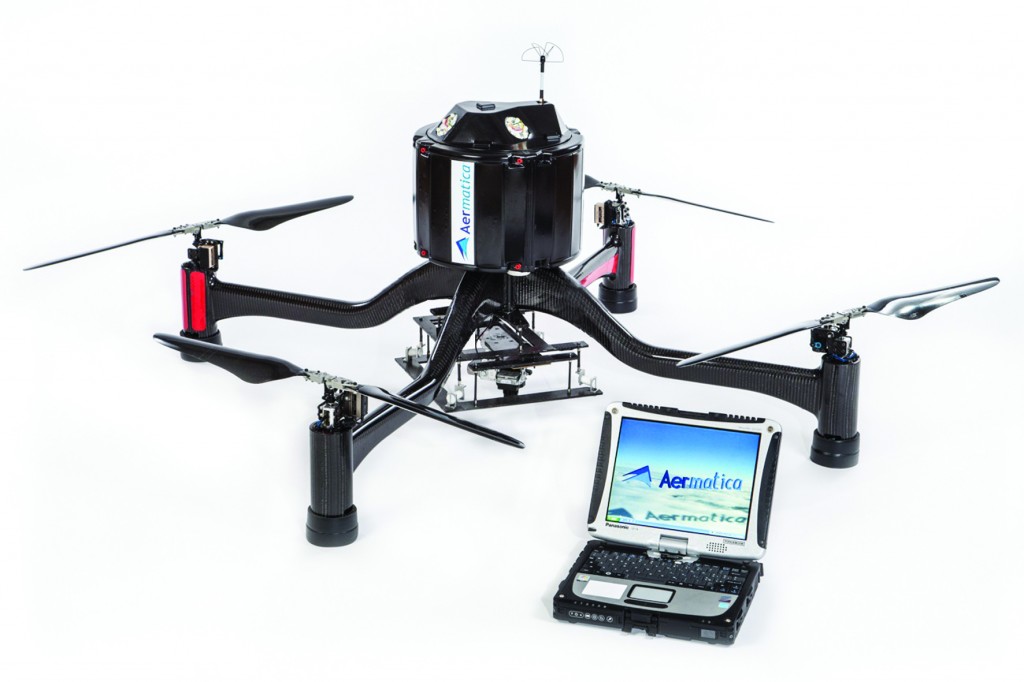The recent technological development of mini RPAS has opened large new opportunities for both surveyors and other Geomatic professionals in the fields of photogrammetry and remote sensing.
In past in fact, these fields have been generally restricted to only a few companies or government agencies with expensive cutting-edge technical equipment (aircraft, satellites, high resolution multispectral cameras, etc), and therefore only interested substantially funded projects.
At the same time, the use of mini RPAS in the field of geomatics evidenced significant new challenges such as the limited payload, the need for calibration of the non-metric cameras and the automatic flight planning based on waypoint navigation systems.
Moreover, further issues such as the definition of all geometric constraints of the stereoscopic photogrammetry and additional options for the flight, the navigation controls and the management of the on-board sensors have been added to the already complex legal issues related to safety and bureaucracy.
Case Study : Basilica S.M. di Collemaggio , L’Aquila (Italy)
The ANTEOS RPAS of the Italian company AERMATICA is the only RPAS that has obtained the permission to fly in non-segregated airspace from the Italian Civil Aviation Authority (ENAC).
 Thanks to this extremely important result, AERMATICA and GEOMATICA_LAB from the University of L’Aquila – lead by its Chief Scientist Prof. Donatella Dominici – agreed to a collaboration regarding photogrammetric surveys. The first was a survey of the most important churches damaged during last earthquake: the Basilica di S.M. di Collemaggio (Unesco Heritage).
Thanks to this extremely important result, AERMATICA and GEOMATICA_LAB from the University of L’Aquila – lead by its Chief Scientist Prof. Donatella Dominici – agreed to a collaboration regarding photogrammetric surveys. The first was a survey of the most important churches damaged during last earthquake: the Basilica di S.M. di Collemaggio (Unesco Heritage).
The purpose of this survey was to elaborate and update the data base on the status of this Basilica that will be used to properly plan any eventual structural interventions.
In particular, the aim of this study is to create a three dimensional model of both the building and its roofs using photogrammetric dedicated techniques. All surveyed data will therefore be used to create a database with metric and cartographic qualities. This database will be interrogated using ad-hoc created algorithms and queries under GIS applications, in order to disseminate already elaborated data with web-GIS platforms. Moreover, integrating optical and thermal sensors, also a geo-referenced thermal model containing structural information will be created and divulgated under the same GIS applications.
Therefore, for the first time in Italy an RPAS compliant with ENAC regulations can be used in an urban environment for specialized aerial work tasks.
GEOMATICA_LAB
The laboratory GEOLAB, started by Donatella Dominici, associated professor of topography and cartography at the engineering faculty of L’Aquila University, is focused on collection and continuously analyzing satellite data, in order to study the movements of the Earth’s crust, both through high resolution satellite imagines and traditional and innovative (UAV) topographic survey.
It proposes itself as a permanent center for the research, the diffusion and the comparison of the data relevant to the study and the evaluation of seismic phenomena.
AERMATICA represents a reference point in the RPAS marketplace. It is a joint-stock company with a high growth rate in its reference sector.
The company designs, manufactures and sells small RPAS and their associated control stations. The ground breaking features of these systems provide plenty of advantages currently not available elsewhere in the marketplace.
Founded in 2008, AERMATICA S.p.A. has been a pioneer in the use of Mini RPAS for Geomatic purposes
Photo: Aermatica Anteos
